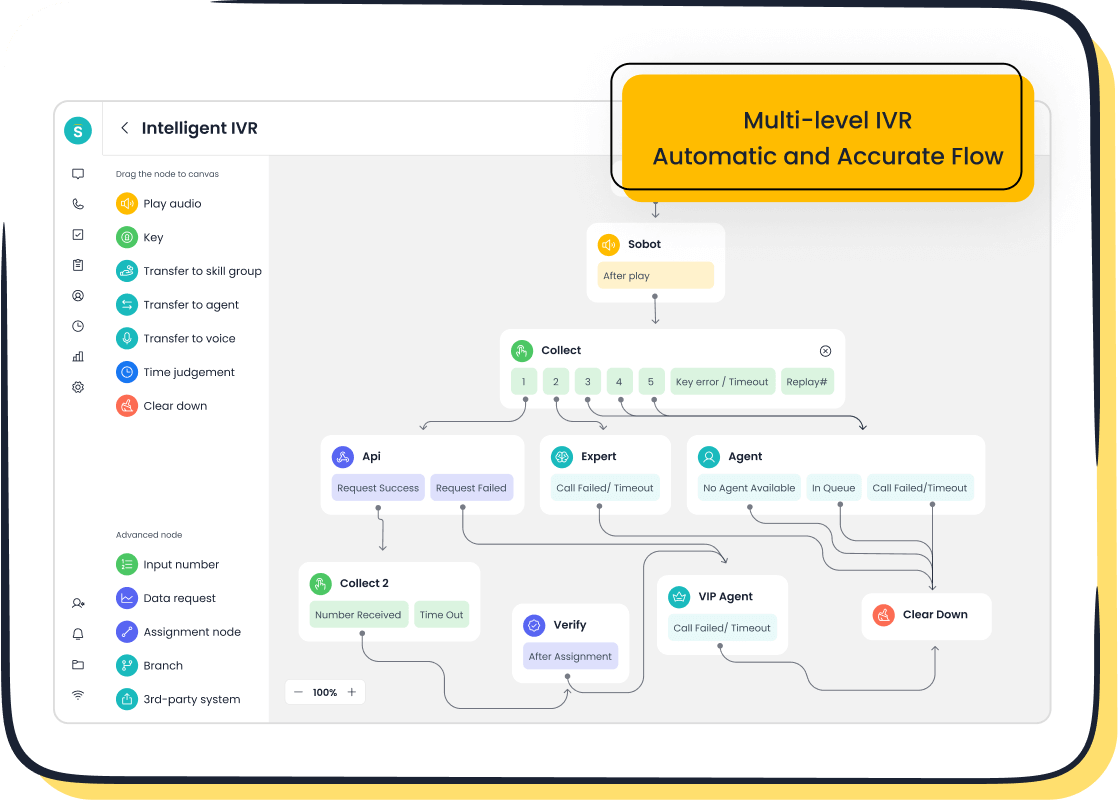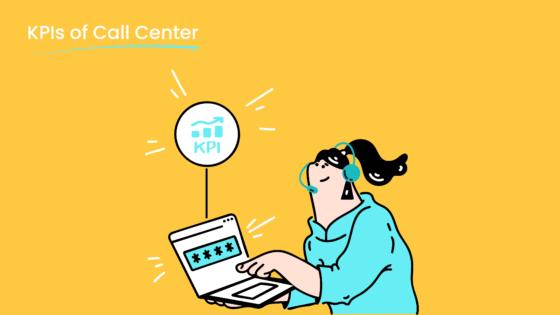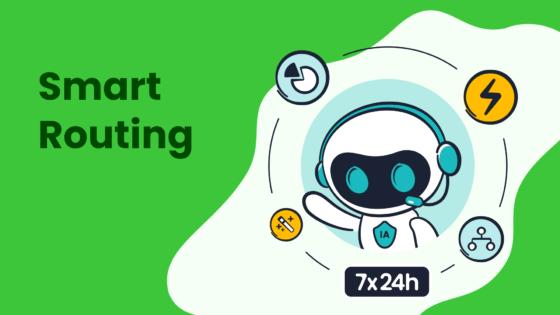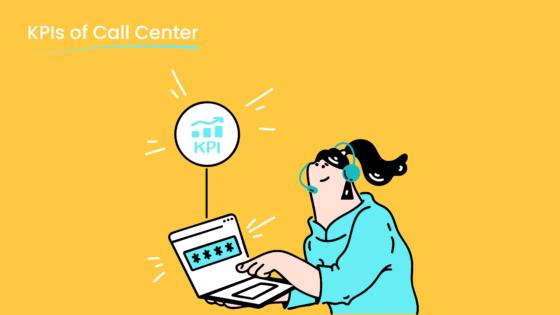The Hidden Power of Average Talk Time in Service

Average Talking Time (ATT) plays a crucial role in customer service. It helps you measure how efficiently your team resolves customer inquiries while ensuring meaningful interactions. Companies like Sobot use this metric to optimize operations and improve service quality. For example, AT&T achieved the highest customer satisfaction for five years by enhancing service delivery through strategic investments. Optimizing Average Talking Time can also lead to significant results, such as an 85% increase in answered calls and higher conversion rates. By understanding this metric, you can enhance both agent performance and customer satisfaction.
Understanding Average Talk Time (ATT)

What is Average Talk Time?
Definition and significance of ATT in customer service
Average talk time measures the average duration agents spend actively speaking with customers during a call. This talk time metric excludes hold time and post-call activities, focusing solely on the interaction itself. It serves as a critical call center metric, helping you evaluate agent efficiency and the quality of customer interactions.
In customer service, average talk time acts as a performance indicator. It reflects how well agents address customer concerns while maintaining operational flow. A balanced ATT ensures customers feel valued without unnecessary delays. For example, industries like sales and telemarketing often aim for shorter talk times (2 to 4 minutes), while technical support may require longer durations (6 to 10 minutes) due to the complexity of issues.
| Industry | Average Talk Time (minutes) |
|---|---|
| Customer service | 3 to 6 |
| Technical support | 6 to 10 |
| Sales and telemarketing | 2 to 4 |
| Healthcare and insurance | 5 to 8 |
| Emergency services | 2 to 4 |
How ATT is calculated and its role as a KPI
You can calculate average talk time by dividing the total talk time by the number of calls handled. For example, if agents spend 300 minutes on 100 calls, the ATT is 3 minutes. This metric helps you monitor agent performance and identify areas for improvement.
ATT also complements other call center metrics like average handle time and first contact resolution. While a lower ATT often indicates faster resolutions, excessively short durations may suggest rushed interactions. Conversely, high ATT could signal inefficiencies or complex inquiries. By tracking this metric, you can optimize workflows and enhance customer satisfaction.
The Role of ATT in Customer Service Operations
Measuring efficiency and quality in call centers
Average talk time provides a clear picture of operational efficiency. It helps you assess whether agents are spending an appropriate amount of time on calls. For instance, monitoring ATT alongside metrics like occupancy rates and average handle time ensures your team meets customer needs without overburdening resources.
High ATT might indicate inefficiencies, such as agents struggling with unclear processes. On the other hand, low ATT could mean agents are rushing through calls, potentially harming customer satisfaction. By analyzing this talk time metric, you can strike a balance between speed and quality.
Balancing quick resolutions with meaningful interactions
While quick resolutions are essential, meaningful interactions often require more time. A well-optimized ATT ensures customers feel heard and valued. For example, companies like American Express prioritize balancing efficiency with customer satisfaction by targeting a 10% improvement in average handle time.

Sobot’s Voice/Call Center can help you achieve this balance. Features like smart call routing and AI-powered voicebots streamline workflows, reducing unnecessary delays. At the same time, real-time monitoring tools provide insights into agent performance, enabling you to maintain high service quality.
Benefits of Monitoring Average Talk Time
Enhancing Operational Efficiency
Identifying inefficiencies in call handling processes
Monitoring average talk time helps you uncover inefficiencies in your call handling processes. For example, if agents consistently exceed the expected talk time, it may indicate unclear workflows or inadequate training. By analyzing this metric, you can pinpoint areas that need improvement.
| Metric | Implication |
|---|---|
| Average Talk Time (ATT) | Indicates how quickly representatives resolve issues or answer questions. |
| Lower ATT | Suggests agents handle customer concerns efficiently while maintaining quality. |
Sobot’s Voice/Call Center provides real-time monitoring tools that allow you to track average talk time and other call center metrics. These insights help you identify bottlenecks and optimize agent-customer interactions for better operational efficiency.
Streamlining workflows with tools like Sobot's Voice/Call Center
Streamlining workflows becomes easier with advanced tools. Sobot’s Voice/Call Center offers features like smart call routing and AI-powered voicebots. These tools reduce unnecessary delays by directing calls to the right agents and automating repetitive tasks. This ensures agents focus on meaningful customer interactions, improving both operational efficiency and agent performance.
Improving Customer Experience
Ensuring customers feel valued through balanced interaction times
Balanced interaction times ensure customers feel valued during their calls. If agents rush through conversations, customers may feel neglected. On the other hand, excessively long calls can frustrate them. Monitoring average talk time helps you strike the right balance, enhancing customer satisfaction.
Sobot’s solutions empower agents to deliver personalized service by providing access to customer data during calls. This approach fosters meaningful agent-customer interactions, improving the overall customer experience.
Reducing wait times while maintaining service quality
Long wait times often lead to dissatisfaction. By optimizing average talk time, you can reduce wait times without compromising service quality. Sobot’s smart call routing ensures customers connect with the right agent quickly, minimizing delays. This not only improves customer satisfaction but also enhances the efficiency of your call centers.
Supporting Agent Development
Using ATT data to identify training opportunities
Average talk time data reveals patterns in agent performance. For instance, agents with consistently high ATT may need training in problem-solving or communication skills. By identifying these gaps, you can provide targeted training to improve agent-customer interactions.
Empowering agents with actionable insights for improvement
Actionable insights from ATT data empower agents to enhance their performance. Sobot’s real-time monitoring tools provide agents with feedback on their interactions, helping them refine their approach. This not only boosts agent confidence but also improves customer satisfaction.
Risks of Mismanaging Average Talk Time
Overemphasis on Speed
The pitfalls of prioritizing short call durations over quality
Focusing too much on reducing average talk time can backfire. When agents rush through calls to meet strict time goals, they may overlook critical details or fail to address customer concerns fully. This approach often leads to unresolved issues, forcing customers to call back. Repeated interactions not only increase operational costs but also harm customer satisfaction.

For example, a study by SQM Group found that 93% of customers are likely to remain loyal when their issues are resolved on the first call. However, prioritizing speed over quality can reduce first-call resolution rates, undermining this loyalty. Tools like Sobot’s Voice/Call Center help you balance speed and quality by providing agents with real-time insights and customer data, ensuring meaningful interactions without unnecessary delays.
How rushed interactions can harm customer experience
Rushed interactions often leave customers feeling undervalued. When agents prioritize ending calls quickly, they may fail to build rapport or provide personalized solutions. This can lead to frustration and a decline in customer satisfaction.
By monitoring call center metrics like average talk time alongside customer feedback, you can identify when speed compromises service quality. Sobot’s smart call routing ensures customers connect with the right agent, reducing the need for rushed conversations and improving overall service delivery.
Ignoring Contextual Factors
Why complex issues may require longer call durations
Not all calls are the same. Complex issues, such as technical troubleshooting or detailed inquiries, naturally require more time. Setting rigid benchmarks for average talk time without considering the context can lead to poor outcomes.
For instance, in technical support, agents may need additional time to guide customers through step-by-step solutions. Ignoring this need can result in incomplete resolutions and dissatisfied customers. By tailoring your call center metrics to the nature of the inquiry, you can ensure both efficiency and effectiveness.
The importance of tailoring ATT benchmarks to specific scenarios
A one-size-fits-all approach to average talking time (att) doesn’t work. Different industries and scenarios demand unique benchmarks. For example, healthcare call centers often require longer durations to address sensitive issues, while sales teams may aim for shorter calls to maximize outreach.
Sobot’s Voice/Call Center offers customizable analytics, allowing you to set realistic benchmarks based on your industry and customer needs. This flexibility ensures your metrics align with your operational goals and enhance customer satisfaction.
Impact on Employee Morale
Unrealistic ATT goals leading to stress and burnout
Unrealistic expectations around average talk time can negatively impact your team. When agents feel pressured to meet unattainable goals, they may experience stress and burnout. This not only affects their performance but also increases turnover rates, disrupting your operations.
A Gallup study revealed that burnout reduces employee engagement by 63%, directly impacting productivity. By setting balanced performance metrics, you can create a supportive environment that fosters agent well-being and efficiency.
The need for balanced performance metrics
Balanced metrics are essential for maintaining a motivated workforce. Instead of focusing solely on average talk time, consider combining it with other call center metrics like first-call resolution and customer satisfaction scores. This holistic approach provides a clearer picture of agent performance and service quality.
Sobot’s real-time monitoring tools empower you to track multiple metrics simultaneously, helping you identify areas for improvement without overburdening your team. This ensures a healthier work environment and better outcomes for your customers.
Actionable Tips for Optimizing Average Talk Time

Leverage Technology
Use AI-powered tools like Sobot's Voice/Call Center for call routing and analytics

Technology plays a vital role in talk time management. AI-powered tools like Sobot's Voice/Call Center can help you optimize average talk time by streamlining call routing. These tools analyze customer data in real time and connect callers to the most suitable agent. This reduces unnecessary transfers and ensures faster resolutions.
For example, Sobot's smart call routing feature uses AI to identify customer needs and direct them to the right department. This not only improves agent efficiency but also enhances the overall customer experience. Additionally, the platform's analytics tools provide actionable insights into call patterns, helping you identify areas for improvement.
Implement automation to assist agents in resolving queries faster
Automation can significantly enhance communication between agents and customers. Tools like AI-powered voicebots handle repetitive tasks, such as verifying customer details or answering FAQs. This allows agents to focus on complex issues that require human expertise.
Sobot's Voice/Call Center includes an AI-powered voicebot that recognizes customer intent and provides instant responses. By automating routine processes, you can reduce average talk time while maintaining high service quality. This approach ensures your team operates efficiently without compromising customer satisfaction.
Train and Empower Agents
Provide training on effective communication and problem-solving
Well-trained agents are essential for managing talk time effectively. Training programs should focus on improving communication skills and teaching agents how to resolve issues quickly. For instance, role-playing exercises can help agents practice handling different customer scenarios.
By using data from tools like Sobot's real-time monitoring system, you can identify specific areas where agents need improvement. This targeted training ensures your team is equipped to handle calls efficiently, reducing unnecessary delays.
Encourage a focus on quality over speed in customer interactions
Encouraging agents to prioritize quality over speed leads to better outcomes. While reducing talk time is important, rushing through calls can harm customer satisfaction. Instead, emphasize the importance of understanding customer needs and providing thorough solutions.
Sobot's unified workspace equips agents with all the information they need during calls, enabling them to deliver personalized service. This approach fosters meaningful interactions, ensuring customers feel valued.
Set Realistic Benchmarks
Tailor ATT goals to the complexity of customer inquiries
Setting realistic benchmarks for average talk time is crucial. Different types of inquiries require varying amounts of time. For example, technical support calls often take longer than sales inquiries. Tailoring your goals to the nature of the call ensures you maintain both efficiency and quality.
Sobot's customizable analytics allow you to set benchmarks based on your industry and customer needs. This flexibility helps you align your operational goals with customer expectations.
Regularly review and adjust benchmarks using data insights
Benchmarks should evolve as your business grows. Regularly reviewing average talk time data helps you identify trends and adjust your goals accordingly. For instance, if you notice an increase in call complexity, you may need to extend your benchmarks to accommodate longer interactions.
Sobot's real-time monitoring tools provide detailed insights into agent performance and call center metrics. By leveraging this data, you can make informed decisions that enhance both agent efficiency and customer satisfaction.
Monitor and Analyze Performance
Combine ATT with other metrics like First Call Resolution (FCR)
Average talk time (ATT) alone cannot provide a complete picture of your call center's performance. Combining it with other metrics, such as first call resolution (FCR), offers deeper insights. FCR measures the percentage of customer issues resolved during the first interaction without follow-ups. A high FCR rate indicates effective problem-solving and customer satisfaction.
For example, if your team achieves a low ATT but struggles with FCR, it may suggest rushed interactions that leave issues unresolved. On the other hand, a high ATT paired with a strong FCR rate could indicate that agents take the necessary time to resolve complex problems effectively.

Sobot’s Voice/Call Center provides tools to track ATT and FCR simultaneously. These insights help you identify patterns and adjust strategies to improve both metrics. By focusing on FCR alongside ATT, you can ensure your team delivers efficient and high-quality service.
Use real-time monitoring tools to identify trends and areas for improvement
Real-time monitoring tools are essential for optimizing performance in call centers. These tools allow you to track metrics like ATT and first call resolution as they happen. For instance, if you notice a sudden spike in ATT, you can investigate whether agents face challenges with specific queries or workflows.
Sobot’s Voice/Call Center offers advanced real-time monitoring features. You can analyze call data, identify trends, and make informed decisions to enhance operations. For example, if agents frequently exceed ATT benchmarks, you can provide targeted training or adjust workflows. These proactive measures improve efficiency and customer satisfaction.
By leveraging real-time insights, you can continuously refine your processes and maintain a high standard of service.
The Bigger Picture: ATT in a Balanced Service Strategy
Integrating ATT with Other Metrics
How ATT complements metrics like Customer Satisfaction Score (CSAT)
Average Talk Time (ATT) works best when paired with other performance metrics. One key metric is the customer satisfaction score (CSAT), which measures how happy customers feel after interacting with your service. While ATT tracks efficiency, CSAT evaluates the quality of those interactions. Together, they provide a complete picture of your call center's performance.
For example, if your team achieves a low ATT but a high CSAT, it shows that agents resolve issues quickly without sacrificing quality. On the other hand, a low CSAT paired with a low ATT might indicate rushed interactions. Tools like Sobot’s Voice/Call Center help you monitor both metrics simultaneously. By analyzing this data, you can identify trends and make informed decisions to improve customer satisfaction.
Using a holistic approach to evaluate service performance
Focusing on ATT alone can lead to an incomplete understanding of your service quality. A holistic approach combines ATT with metrics like first call resolution (FCR) and customer satisfaction score. This method ensures you evaluate both speed and effectiveness.
For instance, a high FCR rate indicates that agents resolve issues on the first call, reducing the need for follow-ups. When paired with ATT, it shows whether agents take the right amount of time to address customer concerns. Sobot’s real-time monitoring tools allow you to track multiple metrics, helping you maintain a balance between efficiency and customer satisfaction.
Aligning ATT with Business Goals
Ensuring ATT optimization supports customer-centric objectives
Optimizing ATT should align with your goal of improving customer satisfaction. Shorter call durations may save time, but they should not compromise the quality of service. Customers value meaningful interactions that address their concerns fully.
For example, a study by HubSpot found that 93% of customers are likely to make repeat purchases from companies offering excellent service. Sobot’s Voice/Call Center supports this objective by providing agents with customer data during calls. This enables personalized interactions, ensuring customers feel valued and satisfied.
Balancing cost efficiency with exceptional customer experience
Efficient call handling reduces operational costs, but it should not come at the expense of customer satisfaction. Striking this balance is crucial for long-term success. For instance, reducing ATT without considering the complexity of customer inquiries can lead to unresolved issues and repeat calls.
Sobot’s AI-powered tools, like smart call routing and voicebots, streamline workflows while maintaining high service quality. These features help you manage costs effectively while delivering exceptional customer experiences. By aligning ATT with your business goals, you can achieve both efficiency and satisfaction.
Average talking time (att) is a vital metric for improving customer service in call centers. By monitoring this data, you can identify inefficiencies, enhance agent performance, and deliver better customer experiences. Tools like Sobot's Voice/Call Center simplify this process with features such as real-time monitoring and smart call routing. These solutions help you balance speed with quality, ensuring every interaction is meaningful. When you optimize att effectively, you not only improve operational efficiency but also build stronger customer relationships.
FAQ
What is the ideal Average Talk Time for customer service?
The ideal Average Talk Time (ATT) depends on your industry. For example, sales calls average 2-4 minutes, while technical support may take 6-10 minutes. Tools like Sobot’s Voice/Call Center help you analyze ATT and set benchmarks tailored to your business needs.
How can Sobot’s Voice/Call Center improve ATT?
Sobot’s Voice/Call Center optimizes ATT with features like smart call routing and AI-powered voicebots. These tools reduce delays by connecting customers to the right agents and automating repetitive tasks. This ensures faster resolutions and better customer experiences.
Why is balancing ATT and customer satisfaction important?
Focusing only on ATT can harm service quality. Customers value meaningful interactions. For example, a study by HubSpot found that 93% of customers prefer companies offering excellent service. Sobot’s solutions help you balance efficiency and satisfaction by providing real-time insights into agent performance.
How does ATT impact agent training?
ATT data highlights areas where agents need improvement. For instance, consistently high ATT may indicate a need for better problem-solving skills. Sobot’s real-time monitoring tools provide actionable insights, enabling you to design targeted training programs for your team.
Can ATT benchmarks change over time?
Yes, ATT benchmarks should evolve as your business grows. For example, increasing call complexity may require longer durations. Sobot’s customizable analytics allow you to adjust benchmarks based on trends, ensuring your metrics align with customer expectations and operational goals.
See Also
Comparative Analysis of Leading Customer Feedback Software
Enhancing Call Center Efficiency Through Effective Monitoring
Best Strategies for Quality Management in Call Centers